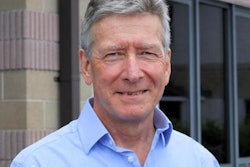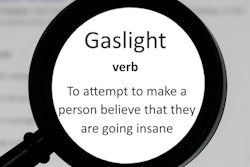
While traveling round the U.K. visiting radiology departments recently, one of the recurring themes was the relentless increase in time taken up with multidisciplinary team (MDT) meetings. This is not generally voiced as a complaint -- most radiologists recognize the value of their input into these meetings and welcome the direct interaction with clinicians -- but there are only so many hours in the week, and an hour spent in an MDT meeting is an hour less for something else.
 Dr. Giles Maskell from Royal Cornwall Hospitals National Health Service (NHS) Trust.
Dr. Giles Maskell from Royal Cornwall Hospitals National Health Service (NHS) Trust.There are individual frustrations, of course. Would it not be possible for the clinicians sometimes just to read the report in the privacy of their office rather than require it to be read aloud to them by someone else in a meeting? Or was it realistic to list a patient for discussion of histology the day after surgery? Probably not.
After watching the development of these meetings over many years, I thought I'd share a few thoughts on the role of the radiologist in the MDT meeting and how to make it a success for patients and professionals alike. This is a personal view, and my experience may well differ from yours. Every meeting is different, depending on the personalities involved and on the disease processes under discussion.
1. Prepare well
I'd be surprised if anyone disagreed with this one. "Time spent in reconnaissance is seldom wasted," according to an old military adage variously ascribed to almost every military commander in history, from Sun Tzu through Napoleon to Rommel. As long as the patients listed are actually discussed (not always a given in my experience), then this holds good for MDT meetings too. There is no substitute for reviewing relevant imaging ahead of the meeting. It may be possible to give a meaningful off-the-cuff opinion on a chest x-ray, but making sense of serial cross-sectional CT or MR imaging studies that may include thousands of images is best done ahead of time rather than under the glare of the spotlight.
2. Know your stuff
You may have a firm grasp of the imaging, but if you can't see things from the clinician's point of view, the value of your input to the meeting will be limited. A genuine understanding of the disease processes and treatment options under discussion will make a world of difference. If you weren't lucky enough to gain this before undertaking radiology training, you will have to work at it. Your clinical knowledge will tell you which findings are most relevant and which can be left as a footnote. Overelaboration of irrelevant findings in the context of a time-pressured meeting can act as a serious irritant to our clinician colleagues.
3. Own the room
I may be biased -- well, obviously I'm biased -- but the best and most effective MDT meetings I've attended have been those in which there is no doubt that the radiologist is in charge! A certain presence is required to keep a sometimes unruly bunch of clinical colleagues moving forward through a busy agenda. Do not tolerate interruptions, parallel discussions about different cases, and attempts to go back over old ground for the benefit of a latecomer. If someone takes a phone call, stop the meeting until he or she finishes it or leaves the room, and never, ever smile at the surgeon's amusing new ringtone.
4. Respect the previous reporter
Even if you have prepared thoroughly for the meeting, you probably have not spent as much time looking at the images as the radiologist who first reported the study. Your expertise may well be greater in the area under discussion, but it is quite possible that the previous reporter had access to earlier imaging or other relevant information that could have led him or her to certain conclusions. Do not dismiss them lightly, especially in the heat of the moment.
5. Remember that you're a doctor
This is probably the most controversial of my views, and I know some of you will take issue with this notion. I think you are entitled to an opinion beyond your interpretation of the imaging, and you should not be afraid to voice it. There are times when the radiologist is well placed to take a step back from the discussion and act as the patient's advocate. There are certainly occasions in which I am the one to question whether the complex surgical procedure under discussion is really the right choice for the patient concerned, given what we have been told of the person's general condition and circumstances. Perhaps it is, but it often turns out that others in the room are glad the question has been asked.
6. Don't forget the washing up
The work doesn't end when the meeting is over. Although recording the outcome of the discussion is not usually the primary responsibility of the radiologist, there will still be a variable amount of work to do, such as inserting an addendum to a previous radiology report in the light of new clinical information. When the recorded outcomes are circulated, you may wish to ensure that the opinions you expressed in the meeting are accurately represented. Also, don't forget to provide feedback to your radiologist colleagues about the outcome of studies they have reported -- their successes, as well as their failures. This is a rich and underutilized source of professional reward and, frankly, is how we all get better at our jobs.
Dr. Giles Maskell is a consultant radiologist at Royal Cornwall Hospitals NHS Trust, Truro, U.K. He is a former president of the U.K. Royal College of Radiologists. Competing interests: None declared.
The comments and observations expressed herein do not necessarily reflect the opinions of AuntMinnieEurope.com, nor should they be construed as an endorsement or admonishment of any particular vendor, analyst, industry consultant, or consulting group.



















